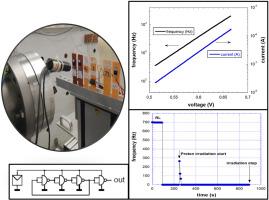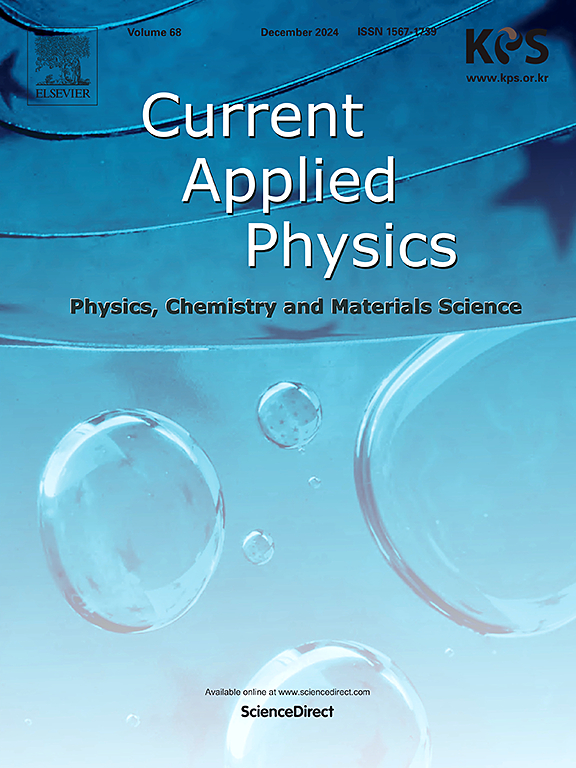A nanowatt oscillator powered only by 68 MeV proton irradiation of a crystalline silicon photodiode pair
IF 3.1
4区 物理与天体物理
Q3 MATERIALS SCIENCE, MULTIDISCIPLINARY
引用次数: 0
Abstract
It is shown, that an ultra-low-power voltage controlled oscillator, realized with conventional NAND gates in ring-oscillator configuration, can be operated by a series connected pair of commercial Silicon pin solar cells, only irradiated by a high energy proton beam as power supply. However a very fast degradation of the solar cells is observed, leading to a stop of the oscillator operation after a very short time. By monitoring the oscillator frequency changes when the stack of photodiodes, in this case illuminated with weak ambient light, is not directly exposed to the proton beam but positioned in different positions close to the proton beam, an evaluation of the off-beam-axis irradiation damage could be done. A detailed electrical analysis of the photodiode properties before and after the direct proton irradiation has been added.

晶体硅光电二极管对仅由68兆电子伏特质子辐照供电的纳瓦振荡器
结果表明,采用传统的环形振荡器结构的NAND门实现的超低功耗压控振荡器,可以由一对串联的商用硅引脚太阳能电池来工作,只需以高能质子束照射作为电源。然而,观察到太阳能电池的快速退化,导致振荡器在很短的时间后停止运行。在弱环境光照射下,当光电二极管堆叠不直接暴露在质子束中,而是放置在靠近质子束的不同位置时,通过监测振荡器频率的变化,可以对离束轴辐射损伤进行评估。详细分析了质子直接辐照前后光电二极管的电学特性。
本文章由计算机程序翻译,如有差异,请以英文原文为准。
求助全文
约1分钟内获得全文
求助全文
来源期刊

Current Applied Physics
物理-材料科学:综合
CiteScore
4.80
自引率
0.00%
发文量
213
审稿时长
33 days
期刊介绍:
Current Applied Physics (Curr. Appl. Phys.) is a monthly published international journal covering all the fields of applied science investigating the physics of the advanced materials for future applications.
Other areas covered: Experimental and theoretical aspects of advanced materials and devices dealing with synthesis or structural chemistry, physical and electronic properties, photonics, engineering applications, and uniquely pertinent measurement or analytical techniques.
Current Applied Physics, published since 2001, covers physics, chemistry and materials science, including bio-materials, with their engineering aspects. It is a truly interdisciplinary journal opening a forum for scientists of all related fields, a unique point of the journal discriminating it from other worldwide and/or Pacific Rim applied physics journals.
Regular research papers, letters and review articles with contents meeting the scope of the journal will be considered for publication after peer review.
The Journal is owned by the Korean Physical Society.
 求助内容:
求助内容: 应助结果提醒方式:
应助结果提醒方式:


